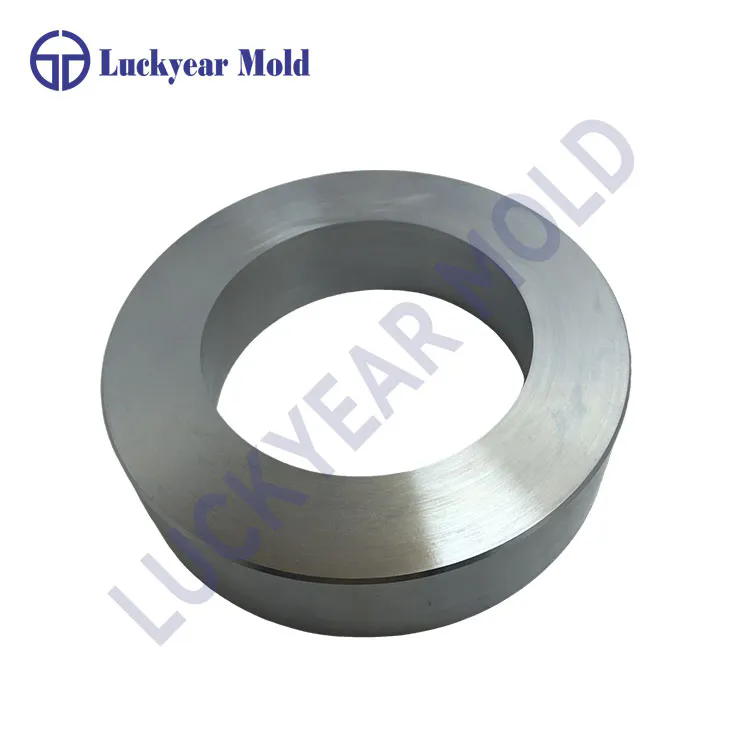What Makes Press Die Mold Components Essential in Modern Manufacturing?
2024-11-08
Press die mold components are foundational to the manufacturing process, providing the precision, durability, and efficiency needed in a competitive industrial landscape. These components are used to shape, cut, and form materials—primarily metal and plastic—into specific forms and structures. But why exactly are they so crucial, and how do they impact production quality and efficiency?
Understanding the Basics: What Are Press Die Mold Components?
Press die mold components refer to the individual parts that make up a press die mold, a tool used in a stamping press. They shape metal or plastic sheets by applying pressure to form, cut, or bend the material according to a desired design. Key components include punches, dies, guide plates, and spring assemblies. Each component has a specialized role, working together to ensure precision and repeatability, which are critical in high-volume production.
The Role of Press Die Mold Components in Precision Manufacturing
Precision is at the heart of manufacturing, and press die mold components deliver this accuracy in multiple ways:
1. Consistent Quality: The precision of each component—from the punch to the guide plate—determines the accuracy of the final product. For example, a high-quality die will produce parts that match exact specifications, reducing waste and ensuring each product meets standards.
2. High Efficiency: These components are engineered to withstand repetitive use, allowing them to produce thousands of units before wear affects quality. This efficiency is particularly valuable in automotive, aerospace, and electronics manufacturing, where consistent output is essential.
3. Enhanced Customization: Manufacturers can customize mold components for specific applications, allowing for complex shapes and intricate designs. Customization extends the scope of products that can be created, offering manufacturers a competitive edge.
How Do Quality Press Die Mold Components Boost Productivity?
In manufacturing, downtime caused by tool wear and breakdowns can be costly. High-quality press die mold components are built from durable materials like high-speed steel or carbide, designed to endure the stress of repetitive operations. This durability leads to less frequent tool replacement, reducing maintenance costs and downtime. Additionally, advanced coating technologies on punches and dies further enhance wear resistance, allowing for longer production runs without sacrificing quality.
Innovations in Press Die Mold Components: What’s New?
Manufacturers continuously innovate to meet the demands of modern industry. Some recent advancements include:
- Advanced Coatings: Coatings like titanium nitride (TiN) and diamond-like carbon (DLC) provide a hard, friction-resistant layer that prolongs the life of mold components and allows them to withstand higher temperatures.
- Precision Machining and 3D Printing: Precision machining, coupled with technologies like 3D printing, enables the creation of intricate and high-accuracy components that were once difficult to produce. These innovations allow for faster prototyping and streamlined production cycles.
- Data-Driven Monitoring Systems: As part of the Industry 4.0 movement, many press die mold setups now incorporate sensors and monitoring systems. These systems collect data on wear and usage, alerting operators when components are due for maintenance or replacement, which optimizes productivity and extends component lifespan.
Why Are Press Die Mold Components Integral to Cost Efficiency?
Cost efficiency in manufacturing hinges on maintaining a balance between material quality and production speed. Press die mold components impact cost efficiency by minimizing material waste, reducing labor input, and maximizing throughput. When parts are crafted precisely and quickly, manufacturers spend less on raw materials and labor, enabling them to deliver competitive prices without sacrificing quality.
Future of Press Die Mold Components: What Can We Expect?
As technology evolves, press die mold components are expected to become even more advanced, with improved durability and efficiency. Developments in materials science, such as the creation of new high-strength alloys and advanced composites, will likely lead to components with increased wear resistance. Additionally, continued integration with digital manufacturing systems will allow manufacturers to monitor performance in real-time, anticipate issues, and optimize processes dynamically.
In Summary
Press die mold components are essential in manufacturing for their role in creating high-quality, precisely engineered products. By combining durability, precision, and adaptability, these components contribute to cost efficiency and productivity in ways that few other tools can. As technology continues to evolve, press die mold components will remain at the forefront of innovation, helping manufacturers achieve the high standards required in modern industry.



